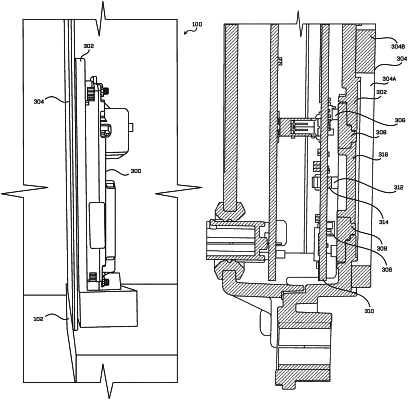| CPC B60R 25/01 (2013.01) [B60Q 9/00 (2013.01); B60R 25/10 (2013.01); B60R 25/305 (2013.01); B60R 25/31 (2013.01); B60R 25/34 (2013.01); G06V 20/56 (2022.01)] | 20 Claims |

|
1. A method of operating a door of a vehicle, comprising:
receiving, from a proximity sensor which includes an infrared emitter and a receiver, first sensor data representing that an object is within a first threshold distance of a portion of the door indicated by a visual indicator at a first time;
determining, based at least in part on the first sensor data, a first movement in a first direction of the object moving from outside the first threshold distance of the portion of the door to within the first threshold distance from the portion of the door at the first time;
receiving, from the proximity sensor, second sensor data representing that the object is outside a second threshold distance of the portion of the door indicated by the visual indicator at a second time;
determining, based at least in part on the second sensor data, a second movement in a second direction of the object moving within the second threshold distance from the portion of the door to outside the second threshold distance from the portion of the door at the second time, wherein the first threshold distance from the portion of the door is greater than the second threshold distance from the portion of the door; and
controlling operation of the door based at least in part on the first movement of the object and the second movement of the object, wherein the first direction is different from the second direction.
|